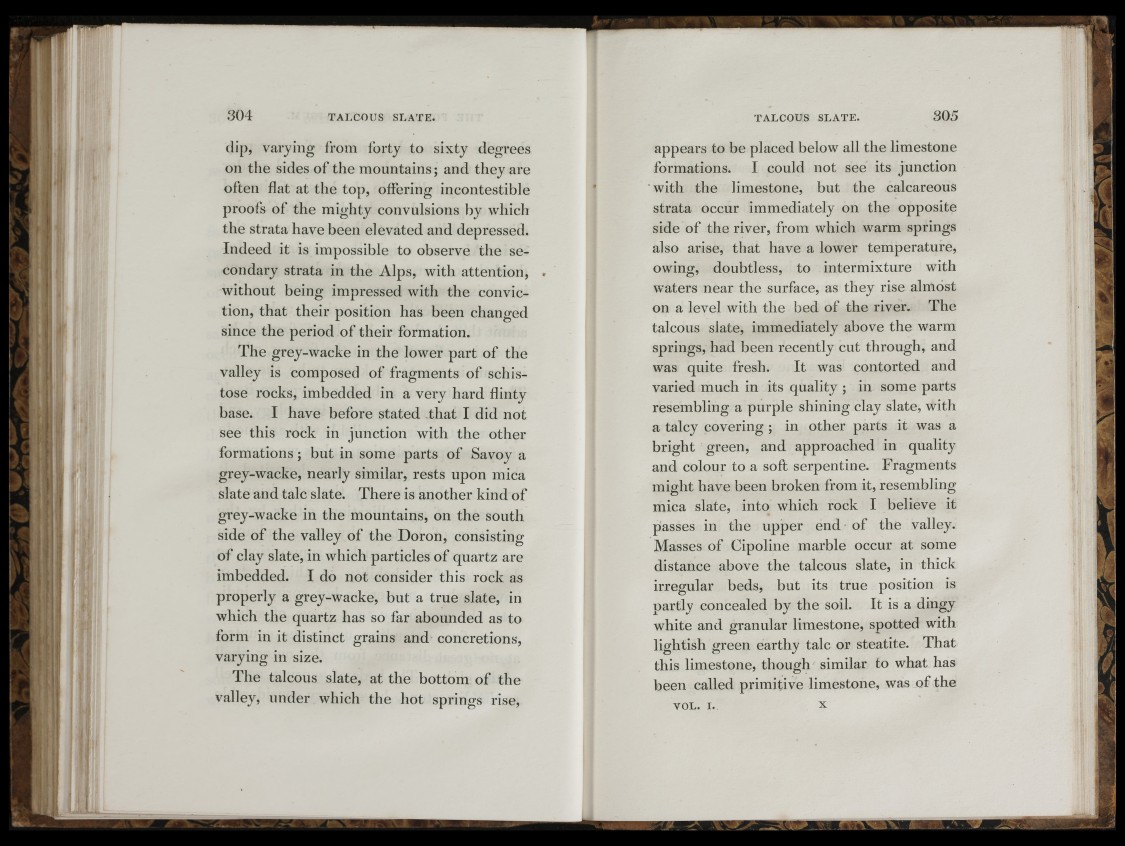
u
n
I i.
dip, varying from forty to sixty degrees
on the sides of the mountains; and they are
often flat at the top, offering incontestible
proofs of the mighty convulsions by which
the strata have been elevated and depressed.
Indeed it is impossible to observe the secondary
strata in the Alps, with attention,
without being impressed with the conviction,
that their position has been changed
since the period of their formation.
The grey-wacke in the lower part of the
valley is composed of fragments of schistose
rocks, imbedded in a very hard flinty
base. I have before stated that I did not
see this rock in junction with the other
formations; but in some parts of Savoy a
grey-wacke, nearly similar, rests upon mica
slate and talc slate. There is another kind of
grey-wacke in the mountains, on the south
side of the valley of the Doron, consisting
of clay slate, in which particles of quartz are
imbedded. I do not consider this rock as
properly a grey-wacke, but a true slate, in
which the quartz has so far abounded as to
form in it distinct grains and concretions,
varying in size.
The talcous slate, at the bottom of the
valley, under which the hot springs rise,
appears to be placed below all the limestone
formations. I could not see its junction
with the limestone, but the calcareous
strata occur immediately on the opposite
side of the river, from which warm springs
also arise, that have a lower temperature,
owing, doubtless, to intermixture with
waters near the surface, as they rise almost
on a level with the bed of the river. The
talcous slate, immediately above the warm
springs, had been recently cut through, and
was quite fresh. It was contorted and
varied much in its quality ; in some parts
resembling a purple shining clay slate, with
a talcy covering ; in other parts it was a
bright green, and approached in quality
and colour to a soft serpentine. Fragments
might have been broken from it, resembling
mica slate, into which rock I believe it
passes in the upper end of the valley.
Masses of Cipoline marble occur at some
distance above the talcous slate, in thick
irregular beds, but its true position is
partly concealed by the soil. It is a dingy
white and granular limestone, spotted with
lightish green earthy talc or steatite. That
this limestone, though similar to what has
been called primitive limestone, was of the
VOL. I . X
%
lP\ t\'